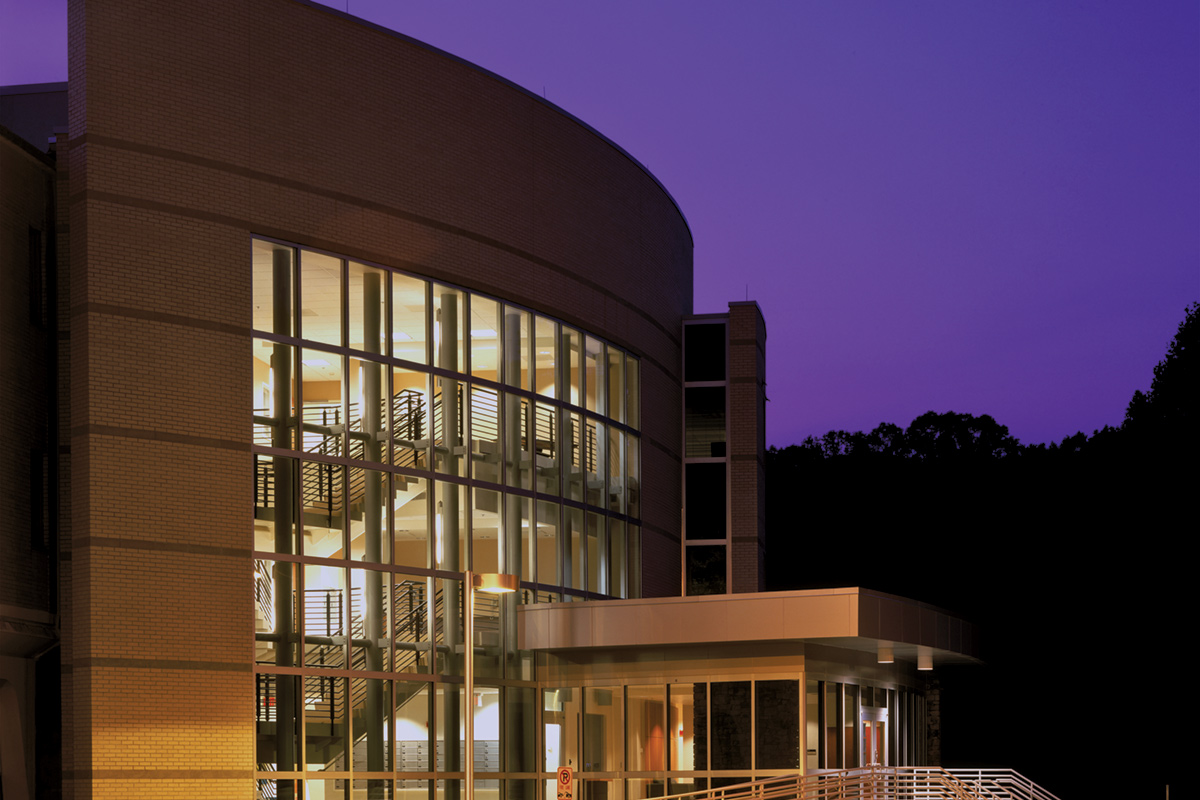Research Powerhouse

7. Primal Study
Robert Yerkes was a pioneering psychobiologist who led the founding of a primate center for Yale University in Orange Park, Florida, in 1930. When he died in 1956, Emory agreed to take over the center from Yale as interest in primate study blossomed. Today, the Yerkes National Primate Research Center, one of only eight centers of its kind funded by the National Institutes of Health, is dedicated to conducting basic science and translational research to improve human health and well-being. The center’s researchers work to bring about advances in vaccine development, treatment for diseases such as Alzheimer’s and Parkinson’s, help for drug addiction, and understanding of the evolutionary links between biology and behavior. The center houses nearly 3,400 nonhuman primates between its main facility at the Atlanta campus and the field station in Lawrenceville, as well as some 10,000 rodents in the Yerkes vivarium. Since 1985, the Yerkes Research Center has been accredited by the Association for Assessment and Accreditation of Laboratory Animal Care International, regarded as the gold seal of approval for laboratory animal care.
9. Research Powerhouse
In 2002, the Whitehead Research Building became the first in the Southeast to achieve Leadership in Energy and Environmental Design (LEED) certification. The $82.7 million, 325,000-square-foot structure houses the cell biology, genetics, and physiology departments of the School of Medicine. The building is named for the influential Whitehead family, headed by Coca-Cola entrepreneur Joseph B. Whitehead. After his death, the family continued their support of the school and Emory University Hospital.

17. Heavy Stuff
Isaac Newton may have defined gravity, but more than three centuries later, scientists still don’t fully understand how it works. In 1962, the Gravity Research Foundation gave the university a five-foot-high pink marble monument to reignite interest in the enigmatic force and, according to its inscription, to “remind students of the blessings forthcoming when science determines what gravity is, how it works, and how it may be controlled.” In 1999 the Gravity Monument was put in storage due to aesthetic conflict with an Isamu Noguchi granite sculpture, but a flood of objections resulted in its reinstallation next to the new Math and Science Center, where it remains, firmly anchored to earth.
Emory’s Schools
21. Oxford College, founded 1836
A liberal-arts intensive program for the first two years of an Emory baccalaureate degree; 930 students; located on Emory’s original campus in Oxford.
22. Emory College of Arts and Sciences, founded 1836
5,325 students; 87 percent volunteer while here; most popular majors are economics, biology, and political science; ranked among “happiest” campuses by Newsweek.
23. School of Medicine, founded 1854
Nearly 25 percent of Georgia physicians are alumni; 531 medical students and more than 1,100 residents; faculty clinicians are responsible for 3.9 million patient services a year.
24. Nell Hodgson Woodruff School of Nursing, founded 1905
Has 481 BSN, MSN, and PhD candidates; ranked in the top 10 private nursing schools nationwide; programs emphasize clinical leadership, research, global health, and social responsibility.
25. Candler School of Theology, founded 1914
One of 13 United Methodist seminaries; 500 students representing 50 denominations; of more than 7,000 alumni, 70 percent are pastors in churches.
26. James T. Laney School of Graduate Studies, founded 1919
Awarded first PhD, in chemistry, in 1948; now 1,700 students in 46 degree programs; awards more than 200 PhDs each year.
27. School of Law, founded 1916
Helped lead university integration challenge in 1961; 811 students; key strengths in environmental, technology, international, and public interest law.
28. Goizueta Business School, founded 1919
Offers a top-10 ranked BBA, three top-25 ranked MBA programs, a PhD, and executive education programs; 1,500 students; enrollment grew more than 40 percent from 2000 to 2010.
29. Rollins School of Public Health, founded 1990
Began as a master’s program in 1975; 967 MPH students and 137 PhD; ranked first in number of applicants for global health, and second in overall applications to a school of public health.
30. Top 20 for 19
This year marks the 19th anniversary of Emory’s presence among the top 20 national universities, according to US News and World Report. Eight of Emory’s individual degree programs rank in the top 20 nationally. In other rankings, Emory gets high marks for best value, happiest, most beautiful, most gay-friendly, most desirable suburban school, and quality of faculty research and publication.
Click here to continue reading.
Our next category of note: Green Space.






